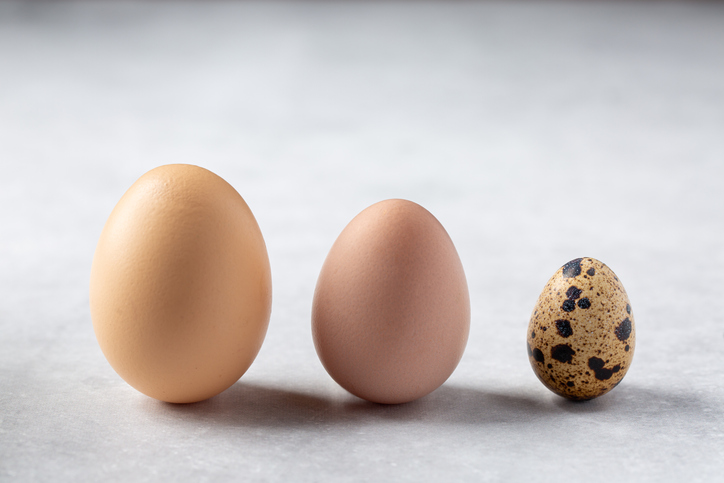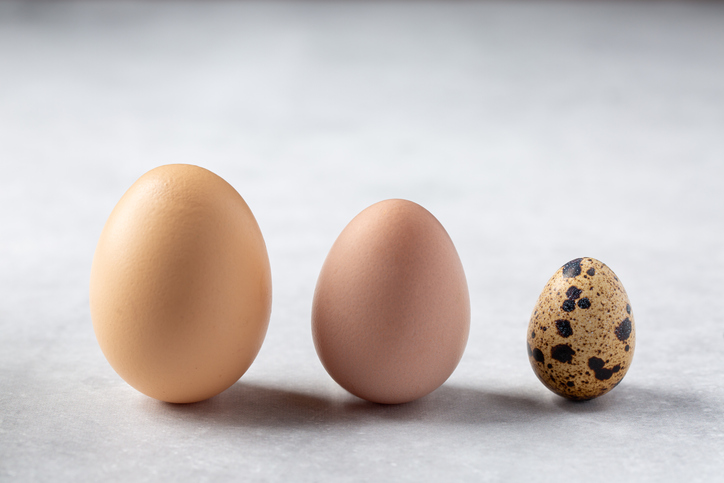1. They are native to Africa
Originating from West Africa, guineafowl have been bred and hunted for food for centuries. They’ve been a part of our lives for a very long time, there are even drawings of them on the walls of pyramids. The most popular breed being the Helmeted guineafowl.
2. They are great security for pheasants
They are very noisy birds, which is great if you need an alarm system in place when it comes to protecting your pheasants from predators such as foxes. It is also believed that guineafowl help teache young pheasants how to roost at night.
3. They love company
Guinea fowls hate to be alone, it is believed that they do like to mate for life. They are very social birds and prefer to move in tight groups.
4. Their eggs are tiny but are packed with protein
Guinea fowl eggs are smaller than chicken eggs (left) and larger than quail (right) but have a much tougher shell than both. The guinea hen eggs can be eaten like chicken eggs, they taste like chicken and duck eggs but with a little more flavour. Their eggs actually have a much higher protein content than chicken eggs. Guineafowl eggs can take between 26-28 days to hatch.


5. There is a Swahili tale about how they got their spots
The origin of the guineafowl's white spots is the subject of a fascinating Swahili legend. It describes how a cow and a guinea bird become friends and watch out for one another in the face of their shared enemy, the lion. The guinea bird would eat while the cow kept an eye out for the lion, and when the lion came around while the cow was eating, the guinea would divert it. The cow was so appreciative that she poured some milk on her, causing the white spots to conceal her companion so the ravenous lion couldn't see it.









